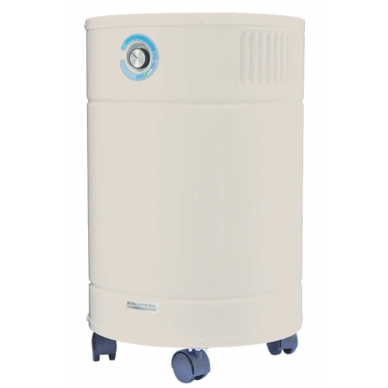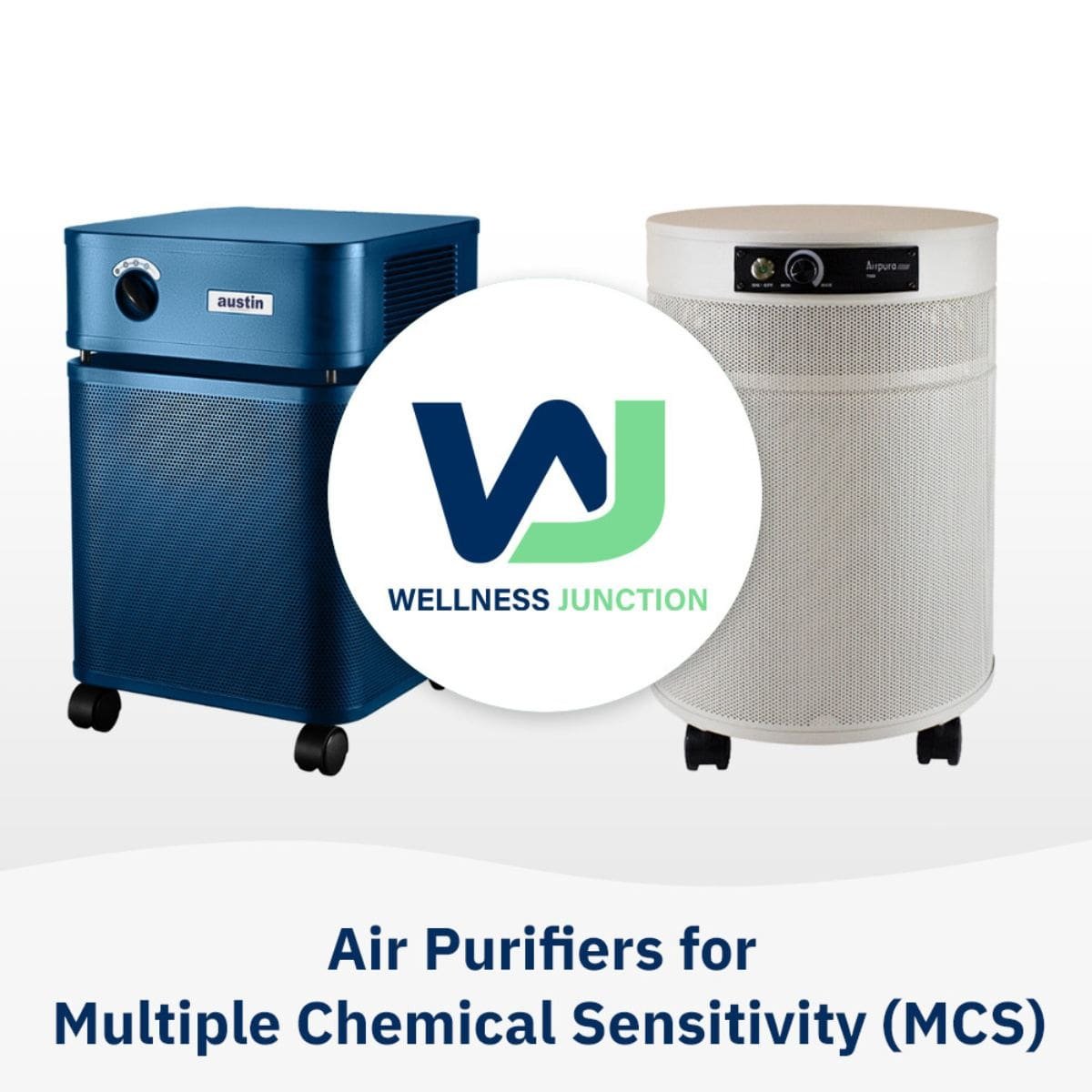Air purifiers reduce VOCs and chemical sensitivities by filtering harmful particles from the air. They use advanced technology to trap and neutralize pollutants, making indoor air safer to breathe.
Many people suffer from allergies and chemical sensitivities. These can be triggered by volatile organic compounds (VOCs). VOCs are present in many household products. Paint, cleaning supplies, and even furniture release these harmful chemicals. Breathing them can cause headaches, dizziness, and other health issues.
Air purifiers can help. They remove these chemicals from the air. This makes your home healthier and more comfortable. Understanding how these devices work can help you choose the right one. Let’s explore how air purifiers can benefit your health.
Introduction To Air Purifiers
Air purifiers have become essential in modern homes. They help create a healthier living environment. These devices are especially important for reducing VOCs and chemical sensitivities. Let’s explore their purpose, benefits, and how they work.
Purpose And Benefits
Air purifiers clean the air by removing harmful particles. They target dust, pollen, and pet dander. More importantly, they reduce volatile organic compounds (VOCs) and chemicals. These harmful substances can come from household products. Reducing VOCs helps in lessening chemical sensitivities. This leads to better respiratory health. It also improves overall well-being.
How They Work
Air purifiers use several technologies to clean the air. Most common are HEPA filters. These filters trap tiny particles. Activated carbon filters are also used. They are effective in absorbing VOCs and chemicals. Some purifiers use UV light. This technology kills bacteria and viruses. Together, these technologies ensure cleaner and healthier air.
Understanding Vocs
Volatile Organic Compounds, or VOCs, are common in indoor air. These compounds can cause serious health issues. Air purifiers help in reducing VOCs. This section explains what VOCs are and their common sources.
What Are Vocs?
VOCs are chemicals that easily become vapors or gases. They are found in many household products. Exposure to VOCs can lead to health problems. Symptoms include headaches, dizziness, and irritation of the eyes, nose, or throat. Long-term exposure can cause more severe health issues.
Common Sources Of Vocs
Many household items release VOCs into the air. Here are some common sources:
- Paints and solvents: These release high levels of VOCs.
- Cleaning products: Many contain chemicals that become VOCs.
- Pesticides: These are another significant source.
- Building materials: Products like plywood and insulation release VOCs.
- Office equipment: Printers and copiers emit VOCs during use.
Using air purifiers can help reduce the presence of these harmful chemicals. It’s important to be aware of VOC sources in your home. Proper ventilation and regular use of air purifiers can make a big difference.
Health Impacts Of Vocs
Volatile Organic Compounds (VOCs) are harmful chemicals found in indoor air. They come from products like paints, cleaners, and furniture. Breathing in VOCs can affect health. This section explores the health impacts of VOCs.
Short-term Effects
Short-term exposure to VOCs can cause various symptoms. People may experience headaches or dizziness. Eyes, nose, and throat irritation are common. Some may feel nausea or have trouble breathing. These symptoms can disrupt daily life.
Long-term Consequences
Long-term exposure to VOCs poses serious health risks. It can lead to chronic respiratory problems. There is an increased risk of developing asthma. Prolonged exposure can affect liver and kidney function. Some VOCs are even linked to cancer. Reducing VOCs in indoor air is crucial for long-term health.

Credit: www.airoasis.com
Chemical Sensitivities Explained
Chemical sensitivities affect many people today. These sensitivities arise from exposure to various chemicals. These chemicals are present in everyday products. They can be found in cleaning agents, perfumes, and building materials.
People with chemical sensitivities often experience discomfort. This discomfort can disrupt their daily lives. Using air purifiers can help reduce the presence of these chemicals in the air. This can alleviate symptoms and improve quality of life.
Symptoms Of Sensitivity
People with chemical sensitivities can experience various symptoms. Some common symptoms include headaches, dizziness, and nausea. Others might feel fatigue, difficulty breathing, or skin rashes.
These symptoms can vary in intensity. They can also depend on the type of chemical and the level of exposure. In severe cases, symptoms can be debilitating and long-lasting.
Common Triggers
Many everyday items can trigger chemical sensitivities. Cleaning products are a major culprit. They often contain strong chemicals that can irritate sensitive individuals.
Perfumes and scented products can also cause reactions. These include air fresheners and scented candles. Building materials, such as paint and carpet, can release harmful chemicals into the air.
Even some personal care products, like shampoos and lotions, can trigger symptoms. It is crucial to identify and avoid these triggers whenever possible.
Air Purifier Technologies
Air purifiers are essential for reducing VOCs (volatile organic compounds) and chemical sensitivities. They use advanced technologies to cleanse the air. Let’s explore two key technologies used in air purifiers: HEPA filters and activated carbon filters.
Hepa Filters
HEPA (High-Efficiency Particulate Air) filters are very effective. They capture particles as small as 0.3 microns. This includes dust, pollen, and pet dander. They can trap 99.97% of airborne particles.
HEPA filters work by forcing air through a fine mesh. This mesh traps harmful particles. Clean air then flows out, improving indoor air quality.
| Particle Type | Size (microns) | Effectiveness |
|---|---|---|
| Dust | 0.5 – 100 | High |
| Pollen | 10 – 100 | High |
| Pet Dander | 0.5 – 10 | High |
Activated Carbon Filters
Activated carbon filters are excellent for removing gases and odors. They are made of porous carbon material. This material absorbs VOCs and chemical vapors.
These filters work through a process called adsorption. Harmful gases stick to the surface of the activated carbon. This leaves the air free from pollutants.
- Removes smoke
- Eliminates odors
- Reduces chemical fumes
Combining HEPA and activated carbon filters in one air purifier is ideal. This ensures the removal of both particles and gases. Thus, providing the best air quality for those with chemical sensitivities.

Credit: www.airpura.com
Effectiveness Of Air Purifiers
Air purifiers are essential for keeping indoor air clean. They help reduce harmful particles like dust, pollen, and pet dander. More importantly, they can decrease volatile organic compounds (VOCs) and chemical sensitivities. Let’s explore how effective air purifiers are.
Reduction Of Voc Levels
VOCs are harmful chemicals found in many household items. Paints, cleaning products, and furniture release VOCs. These compounds can cause headaches, dizziness, and other health issues.
Air purifiers with activated carbon filters are effective in reducing VOC levels. These filters trap harmful chemicals and prevent them from circulating in the air. By using an air purifier, you can lower the concentration of VOCs in your home.
Here is a table showing the reduction of common VOCs by air purifiers:
| VOC | Reduction Percentage |
|---|---|
| Formaldehyde | 90% |
| Benzene | 85% |
| Toluene | 80% |
Studies And Evidence
Several studies support the effectiveness of air purifiers in reducing VOCs and chemical sensitivities. For instance, a study by the Environmental Protection Agency (EPA) found that air purifiers with HEPA and activated carbon filters significantly reduce VOC levels.
Another study conducted by Harvard University showed that using air purifiers improved indoor air quality. Participants reported fewer symptoms related to chemical sensitivities. These findings highlight the importance of having an air purifier at home.
Here is a summary of key findings from various studies:
- EPA study: 70-90% reduction in VOCs
- Harvard study: Improved air quality and fewer symptoms
- University of California study: Significant decrease in indoor pollutants
These studies provide strong evidence that air purifiers are effective in reducing VOCs and chemical sensitivities.
Choosing The Right Air Purifier
Choosing the right air purifier can help reduce VOCs and chemical sensitivities. It’s crucial to select a model that fits your needs. This guide will help you understand what to look for. It will also introduce you to top-rated models available today.
Key Features To Consider
HEPA filters are essential for trapping small particles. Look for a purifier with a HEPA filter to remove allergens. Activated carbon filters are also important. They help absorb VOCs and odors. An air purifier with both is ideal.
Consider the room size where you will use the purifier. Some purifiers are designed for small rooms. Others can handle larger spaces. Check the Clean Air Delivery Rate (CADR). It shows how quickly the purifier cleans the air.
Noise level is another key feature. Some purifiers are noisy and can disrupt your peace. Look for models with low noise levels. Also, check if the purifier has a night mode. This feature reduces noise levels during sleep.
Energy efficiency matters too. An energy-efficient model saves on electricity bills. Look for Energy Star-rated purifiers. They use less power without compromising performance. Lastly, consider the maintenance cost. Check the price of replacement filters. Some filters need frequent changing, which can add up.
Top-rated Models
The Honeywell HPA300 is a popular choice. It features a HEPA filter and activated carbon filter. Suitable for large rooms, it has a high CADR rating. It also operates quietly and is Energy Star rated.
The Coway AP-1512HH is another top-rated model. It combines a HEPA filter with an activated carbon filter. This purifier is perfect for medium-sized rooms. It has a sleek design and is very quiet. It also includes an eco mode to save energy.
The Levoit LV-H132 is great for small rooms. It features a HEPA filter and an activated carbon filter. This compact model is budget-friendly. It operates quietly and is easy to maintain. Its night light feature is also a plus.

Credit: www.usairpurifiers.com
Maintaining Your Air Purifier
Air purifiers are crucial in reducing VOCs and chemical sensitivities. Regular maintenance ensures they work effectively. Proper upkeep extends the lifespan of your device. It also keeps your indoor air clean and safe.
Regular Cleaning
Regular cleaning is key for your air purifier. Dust and debris can clog filters and reduce efficiency. Wipe the exterior with a damp cloth weekly. Use a vacuum to clean the pre-filter. This helps in removing large particles.
Ensure to turn off and unplug the device before cleaning. This prevents any electrical hazards. Cleaning the purifier regularly ensures optimal performance.
Filter Replacement
Filter replacement is essential for maintaining clean air. Each filter has a specific lifespan. Check the manufacturer’s guide for replacement intervals. Most HEPA filters need replacing every 6 to 12 months.
Carbon filters often require replacement every 3 to 6 months. Regularly replacing filters ensures your purifier effectively captures VOCs and harmful chemicals.
Here’s a quick guide:
| Filter Type | Replacement Interval |
|---|---|
| HEPA Filter | 6-12 months |
| Carbon Filter | 3-6 months |
Always use genuine replacement filters. They ensure compatibility and efficiency.
Additional Tips For Reducing Vocs
Reducing VOCs in your home environment goes beyond just using an air purifier. There are several strategies that can help you keep VOC levels low and minimize chemical sensitivities. Below are some practical tips to help you achieve a healthier indoor space.
Ventilation Strategies
Ensure your home is well-ventilated. Open windows and doors to let fresh air in. Use exhaust fans in kitchens and bathrooms. These fans help remove indoor pollutants. Install attic vents and crawlspace vents. They improve airflow and reduce VOC buildup. Regularly check and clean these ventilation systems. Proper maintenance ensures their efficiency.
Using Low-voc Products
Choose low-VOC or VOC-free paints and finishes. Read product labels before purchasing. Many household items contain VOCs. This includes cleaning supplies, adhesives, and air fresheners. Opt for natural or organic alternatives. They are less likely to release harmful chemicals. Store chemicals in tightly sealed containers. Keep them in a well-ventilated area, away from living spaces.
Frequently Asked Questions
How Do Air Purifiers Reduce Vocs?
Air purifiers reduce VOCs by using activated carbon filters. These filters trap and neutralize harmful chemicals. This process improves indoor air quality.
Can Air Purifiers Help With Chemical Sensitivities?
Yes, air purifiers can help with chemical sensitivities. They remove airborne chemicals and pollutants. This makes the air cleaner and safer to breathe.
What Are Vocs In The Air?
VOCs are volatile organic compounds. They are chemicals that easily become vapors or gases. Common sources include paint, cleaning products, and building materials.
Do All Air Purifiers Remove Chemicals?
Not all air purifiers remove chemicals. Look for models with activated carbon filters. These are specifically designed to trap and neutralize chemicals.
Conclusion
Air purifiers can greatly reduce VOCs and ease chemical sensitivities. Clean air promotes better health and well-being. Investing in a good air purifier is a wise choice. It makes your home safer and more comfortable. Breathe easier and live healthier.
Your body will thank you.
Rakib Sarwar is a Registered Pharmacist and a reputed health and wellness blogger. He has a great interest in Air purifiers.
